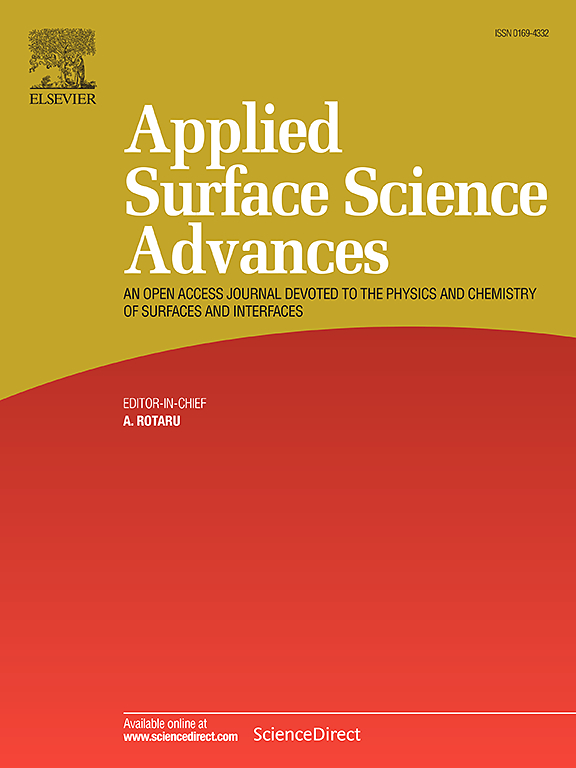Light extraction enhancement of ZnO-based heterojunction light-emitting diode with roughened-ZnO surface
IF 8.7
Q1 CHEMISTRY, PHYSICAL
引用次数: 0
Abstract
A hydrochloric acid (HCl)-etched ZnO surface was developed to enhance the light extraction efficiency (LEE) of the ZnO/GaN heterojunction light-emitting diodes (LEDs). This roughened surface led to the scattering of the incident light and resulted in the apparent enhancement of the film’s photoluminescence. It also showed better ohmic contact to the electrode ITO/Ag/ITO structure. The light output power density of the resulting LED was significantly higher than that of the referenced LED without the surface roughening process. Moreover, the roughened surface was beneficial for the current spreading of the injecting current. Accordingly, the luminance radiation from this device could be further optimized at an elevated injection current.
粗糙zno表面zno基异质结发光二极管的光提取增强
为了提高ZnO/GaN异质结发光二极管(led)的光提取效率,研制了一种盐酸(HCl)蚀刻ZnO表面。这种粗糙的表面导致入射光的散射,导致薄膜的光致发光明显增强。电极ITO/Ag/ITO结构也表现出良好的欧姆接触。所得LED的光输出功率密度明显高于未进行表面粗化处理的参考LED。此外,粗糙的表面有利于注入电流的扩散。因此,在较高的注入电流下,该装置的亮度辐射可以进一步优化。
本文章由计算机程序翻译,如有差异,请以英文原文为准。
求助全文
约1分钟内获得全文
求助全文

 求助内容:
求助内容: 应助结果提醒方式:
应助结果提醒方式:


